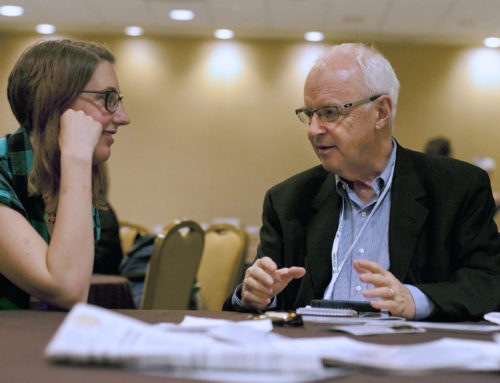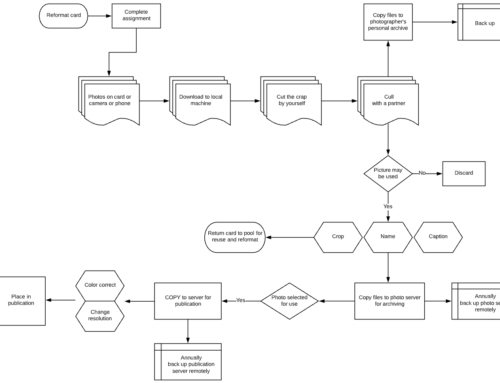RELATED ARTICLES “It Can Happen Here” |”Oklahoma City Blast: A Nation Responds” from Texas EMS Magazine | “Taylor Employee Reports on OKC Tragedy” from Directions
Rescue magazine
September / October 1995
By Bradley Wilson
Even on the quietest of days, Jon Hansen, Oklahoma City Fire Department assistant chief, is a busy man. And the days since the explosion in the heart of his city have been anything but quiet. Hansen was among the first on scene after the Murrah Federal Building blast rattled the walls of his nearby office, and he played an integral role in the response. Hansen said “it’s a myth” that things are back to normal for the Oklahoma City Fire Department since operations ceased and what was left of the Federal Building was demolished. The post-mortems and critical incident stress debriefings will continue for months, but Hansen took some time to talk to RESCUE about the incident from the perspective of a host department commander.
What were your primary responsibilities in the first few hours following the blast and how did they change as the incident progressed?
I was helping establish command procedures. I checked the special services hazardous materials, technical rescue, and EMS-that I have. The best thing I could do was stay out of the way of competent individuals who were performing their tasks. Once the command structure was established, I went back to the building to observe how search and rescue was going. Then I established the media area. [The command staff] didn’t jump in and take over. We just expanded what was already there. We were disciplined enough not to deviate from the incident command system. We’ve trained these individuals for years to perform in these roles.
How did you gain scene control and stop bystanders and other unprotected workers from roaming/helping in the hazard areas?
When I got back to the command area, an Oklahoma City police captain was already there. It was a hand-in-hand public safety operation. I told him, ”We need police officers back there to keep out citizens for their own safety.” We determined what access routes were needed for the emergency equipment. Then we began working with the media. Another thing that worked in our favor was that it was 9 a.m. It was after rush hour. Our citizens cooperated like you wouldn’t believe-unbelievably professionally. I had civilians coming up to me saying, ”How can I help?” We put them to work. We told them, “Go and sit with that person.” People evacuated the nearby banks so fast, they left money sitting on the counters. Not a penny was taken.
When were Federal Emergency Management Agency task force teams requested and how did you determine how much mutual aid would be needed?
You know, I really don’t know when FEMA officials were called. We were pretty focused on the building at that point. We knew with this type of operation, we could use some help. [Firefighters] shouldn’t be scared to ask for help. I’m sure glad we were smart enough to do that. It was reassuring to see the response of the fire service. We’ve got some repaying to do. [Mutual aid] just happened. You know how firefighters are, they’re going to help. As people started just showing up, we assigned Mike [Bowen, chief of Midwest City Fire Department] the job of keeping mutual aid coming in. He had the resources: 26 fire departments in the metro area.
Were there regular organized meetings of chiefs, team leaders and commanders to discuss strategies and needs? Who attended? Were these meetings beneficial?
We had numerous meetings. We met with lead officials from all the various agencies involved; those were just continuous. We met with elected officials. We met with FEMA. The coordinators of all the agencies met twice each day, once at 7 a.m. and once at 7 p.m. At those meetings, we set goals for what we wanted to accomplish within the next 72 hours, and looked at what we had done. It’s imperative you do that in a large-scale incident. One of the priorities was sharing information. There were no secrets.
How were firefighters assigned to different areas of the building?
If we needed a task completed, we would call a group in to go to The Pit or The Pancake or The Cave. Each group was assigned a team leader and a specific task that had been determined at the goals meeting. Everyone checked in at the Operations Center before going down to the site, which was two blocks away. They checked in at the Incident Command Center, and then they logged in at Staging. We had three ways of knowing who was in the building.
What was toughest on your firefighters?
The kids, without a doubt. We rolled up knowing there was a day-care center in the building. Seeing kids with blood on their faces — it really hits home. It was tough going up to the second floor and seeing the ones who were killed. And having to stop operations knowing there were still two people in the rubble — walking away that night was tough.
How did you deal with rescuers who did not feel comfortable packaging or handling dead bodies?
We didn’t run into that very much. If it did happen, we would assess what areas wouldn’t cause the person undue stress. Then we would reassign that person to that area. That person was still important. We wanted to make sure they still felt part of the operation.
What kinds of injuries, if any, were suffered by emergency workers?
We did not have any rescuers who were seriously injured, which is amazing considering the amount of human resources in the building. We had a report of 30-plus rescuers with minor injuries, none of which required hospitalization. We consider that very fortunate, working in the types of conditions we faced. Each team was assigned a safety officer who was on the lookout for the rescuers and monitored their activities.
How soon was rehab put into place for rescue workers and what was provided?
That happened from the initial time we arrived. We have an unbelievable relationship with the Red Cross and Salvation Army. They provide relief, including things that are easy to overlook like lights and food, at all of our big incidents. Rehab was there initially from the word “go.” Our own CISD staff and our state team were active. Other CISD teams assisted. I know teams came in from Iowa and Shreveport, Louisiana, I’m sure there were others, too.
What were some of the surprises, good and bad, that occurred during the rescue operations?
One surprise I saw was the response of this community and the response of the people across the nation. We knew what type of people we have here, but we never expected the support we got. There were more frustrations than surprises. The weather turned on us. We had so much rain it slowed us down. We also had some frustration with the building. When we had structural problems, we’d have to back up and do some shoring, and that slowed us down.
How are you coping personally?
We’re still so busy; I’m not sure any of the command staff has had time to review it. It’s a reality check and makes you appreciate what you’ve got. I’ve got a 3-year-old daughter at home. I appreciated her before, but this made me really learn to appreciate her. I’ve been undergoing critical incident stress debriefing just like all the others. No one was exempt from CISD.
How did your family and close friends deal with all this?
They were extremely supportive. Even my 3-year-old knew what was going on. She knew of the “mean man that hurt the building.”
Describe the most significant moment for you during the operations.
The thing that stands out for me was when I went and visited the families of victims. I gave them a briefing and, even after all they’d been through, they stood up and said, “Please don’t let our firefighters be hurt. ” And then they gave us a standing ovation. The families made us ribbons with angel pins. That was really moving.
If you could give one piece of advice to other rescuers who may have to manage scenes like this, what would it be?
Get to know the people you’re going to work with personally. We were on a first-name basis with the police department, highway patrol and the other agencies that responded. We all knew each other and had worked together before. It’s important to make sure that everyone knows your incident command system. Your fire department is not the only one working under your IC. Everybody who responds needs to know incident command. We’ve interacted with all the hospitals on disaster preparedness. It just fell into place.
Bradley Wilson, EMT-I, is a marketing manager for Taylor Publishing in Dallas.





Leave A Comment